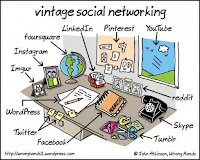Conversations in Classrooms: Why I Believe It's Necessary
The desire and ability to teach has been coursing through my veins for as long as I can remember yet simply teaching in my community was never enough for me. At the age of sixteen, I decided to change my own life, leave behind my beloved family and friends, and teach a campo known as Punta Caña in San Juan de la Maguana, Dominican Republic. Upon returning, I knew for sure that I wanted to teach, but I was not sure where I fit in upon returning to my little hometown of Attleboro, Massachusetts. I was still that white, middle-class, Christian female from the United States, but in my heart, I felt more connected with the individuals I lived with in the Dominican Republic. For that reason, I struggled to see the world, especially the educational system I had benefited from for so long, in the same light. I had grown much more aware of the diverse population in my town and how no one tried to validate these individuals and the experiences they had, regardless of how they worded it.
People all around me had already determined how they were going to view other individuals, especially students, before talking to them. They almost refused to listen as these individuals tried to clarify misconceptions and injustices they had experienced; yet still no one listened. Teachers forged ahead with the designated curriculum, not seeing how it silenced so many of the students they were serving. Back then, as a student myself who aspired to be a teacher, I was aware of the differences and the needs of different students in my classes and school, but I still did not feel empowered to act. “When I become a teacher, I can bring these topics up and readjust our views,” I constantly told myself.
Yet, I still see this same problem happening with our students, eight years later (you think we would’ve figured it out by now). We try to tell them who they are based on what we see before us. We do this without consulting them and their experiences. Because of that, we have already tainted our perception of them as individuals.
Yet, for some reason, my students were not doing this. Why? I wondered. The answer? They were not (and are not) given this opportunity. They were limited to a surface level exploration of how school connects with their lives. From the moment they began school, blinders were put on them, limiting their view to the dominant ideologies deemed necessary and important by society. For someone who had sworn that she would make the curriculum different and inclusive, I was far from that. The curriculum I used continued to emphasize the one narrative and perspective that I had been taught myself in school, and it was not until time in Dr. Bogad’s classes that I realized there were ways I could incorporate the ideologies I wanted into the required instruction. But before my classes could begin discussing and dissecting the one perspective and narrative, I had to create a safe space that my students and families felt they could discuss their unique ideologies, identities, and perspectives.
And I realized while working on this project for Dr. Bogad’s classes that I had unintentionally not created such a space for my students and their families. Not bringing up our differences and identities in class-- keeping silent about our diversity-- was just as harmful, if not more harmful, as saying that only a certain perspective was appreciated and permitted. Moreso, I realized that this silence around topics of race, sexual orientation, and gender had come from a pressure placed on all teachers by their school districts to strive for excellence. As a new teacher in the district, I felt that I was under extreme scrutiny, and I found myself complying with the curriculum, even when deep in my heart I knew there was so much more that needed to be added to the narrative and learning our students were receiving. In a desire to make it through my first year and secure my position for the upcoming year, I stuck to the curriculum and allowed for little exploratory learning to happen. I am ashamed at myself for this, even more so because I, like Sir Ken Robinson, believe that students need to be curious and need to be given time to ask questions.
That is after all, what I wanted more than anything in my classroom. For questions to naturally come up that would open the door for students to have conversations with their peers (and then at home with their families) about the differences amongst us all and how that shapes our experiences in life. I wanted these conversations to occur, but as I continued teaching, that did not happen. Rather, students were asked to consume what was presented to them without asking them to critically consume it, without asking them to think how it affects them. We were blocking our students from having a dialogue that leads to true learning, as Sherry Turkel would say. (We need to have true connections with each other in order to have these conversations.)
 And I know, deep in my heart, that this is not the type of educator I have aspired to be. I continue to question myself in everything that I do, much like I want my students to question what they are learning. I continue to question how I can get my students to view the world and our lessons with a critical, social justice mindset and how they could connect themselves to what we were learning. As I embarked on this journey, I realized that how or what did not matter to my students if they did not know why. Like Simon Sinek, I believe that students won’t buy what I do until they know why I do it. From there, I decided that for the coming years, beginning with the next academic year, I need to make it known to my students why we will be having these conversations. More importantly, I needed my students to partake in this deliberate work of creating a classroom centered on openness, communication, and trust (after all, we are equal stakeholders in their learning). Once they all felt that they were in a safe space, they would bring their true identities and perspectives to the table.
And I know, deep in my heart, that this is not the type of educator I have aspired to be. I continue to question myself in everything that I do, much like I want my students to question what they are learning. I continue to question how I can get my students to view the world and our lessons with a critical, social justice mindset and how they could connect themselves to what we were learning. As I embarked on this journey, I realized that how or what did not matter to my students if they did not know why. Like Simon Sinek, I believe that students won’t buy what I do until they know why I do it. From there, I decided that for the coming years, beginning with the next academic year, I need to make it known to my students why we will be having these conversations. More importantly, I needed my students to partake in this deliberate work of creating a classroom centered on openness, communication, and trust (after all, we are equal stakeholders in their learning). Once they all felt that they were in a safe space, they would bring their true identities and perspectives to the table.
Everyone had to believe that their voice needed and wanted to be heard, regardless of where they were. Communication and conversation had to be the center of everything we did, in and outside of school. It is integral to me in my beliefs that students and their guardians are able to have these conversations, either with one another or also with the teacher. Through the use of Wikispaces, I decided to create discussion boards surrounding the topics I hope to incorporate into our mainstream curriculum. While I will still be having these conversations with students in class, I want families to see that these discussions are ways for us to include everyone’s perspective. I am the one facilitating the conversations and deciding what the topic will be, but that in no way means that I am telling people what to think. I believe families and students need to know that everyone has knowledge to offer on a topic, not just the teacher.
By posting the discussions online, I am shifting into being a techno-constructivist as Scott Noon would define it. I am taking the original classroom discussion topic and now placing it online for the conversation to be continued and for other members of the school community to comment on. While having discussions is nothing new, the manner in which I am doing it is still new so that the conversation does not just “stop and start” when I, the teacher, have decided. By enabling my students and families to decide when and how they want to respond, I am enabling them truly partake in the learning. This discussion board also helps to reaffirm my belief I that we can readjust our views on others by entering into conversations with those whose perspective and voice may have been left out otherwise. Many times, people feel discouraged or shy to engage in difficult conversations, especially when there are others who hold opposing viewpoints. Hopefully, the discussion boards on our classroom Wikispaces will help the individuals in my classroom through this and help them connect with one another on a deeper level.
At the same time, though, I want to honor the privacy of others who wish to partake in individuals conversations with myself, and so I have decided to use the TalkingPoints application to engage in conversations with parents and families, regardless of their home language, around the topics discussed in class. Too many times, families and parents of students who use a minority language are left out of crucial conversations, therefore leaving their narrative and perspectives out. It is crucial to include all individuals who have a stake in our students' education, and that is why I chose to use TalkingPoints. It allows for me to send and receive text messages from parents and families in a way that is understandable for both parties. Using TalkingPoints in this way makes me a technocrat since I am using this application to replace hand-written notes to parents about topics discussed in class. While TalkingPoints does not replace the hard-copy family communication I send home to families, it will facilitate the process of communicating with families across language differences. This is yet another way that highlights why I feel everyone involved in the child’s learning needs to be communicating, regardless if it is in English, Spanish, or another L1.
Both of these tools enable two way communication and I believe that these tools will facilitate the true learning and teaching I want to occur in my classroom. All students are capable of deep conversation, but there needs to be trust and openness about what we are doing and why.
Before I can dive into social justice lessons and curriculum and begin having different dialogues from the norm, my students and families need to trust and encourage one another. Trust must first be established before we can dive into dissecting the curated environments before us. It is not easy, but it is necessary. Before we can “pull back the curtains on the myths that bind us” as Linda Christensen so clearly stated, we need to establish a community that welcomes our unique perspectives and insight. I aim to do just that in this upcoming year.
Here is my self-assessed rubric.







Comments
Post a Comment